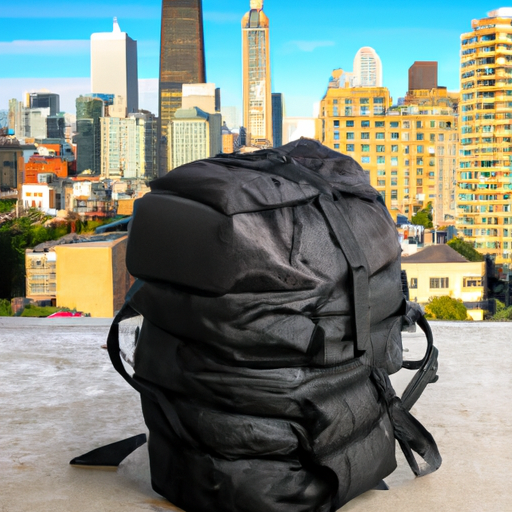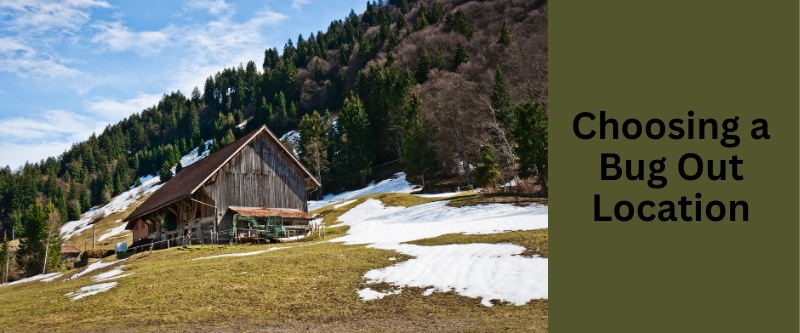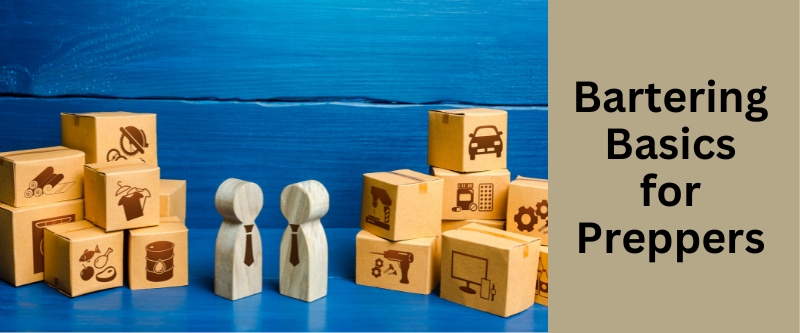Table of Contents
Key Takeaways
- Recognizing imminent threats in urban settings.
- The importance of a well-thought-out bug-out plan.
- Packing essentials for urban scenarios.
- Navigating the cityscape stealthily and efficiently.
- Preparing mentally and physically for an urban escape.
Understanding the Need to Bug Out
The Reality of Urban Threats
Today’s world is rapidly changing. And in many respects, it is for the worse, especially in urban environments. Look at Chicago, New York, and Philadelphia, where danger from the mob is obvious.
But bear in mind these mobs are engaged in casual and violent looting just because they can and they can get away with it. These mobs are not desperate for food or water. But just imagine their behavior if they were. The point is that the city is already a dangerous place. A crisis will make it worse
So while the city bustles with life and opportunities, it is also rife with potentially dangerous threats.
From civil unrest and riots to natural disasters like earthquakes and floods, city dwellers face a unique set of challenges. And while the convenience of city life is undeniable, when disaster strikes, the concrete jungle quickly becomes a treacherous maze.
The Dangers of Staying in Urban Areas during Disasters
Imagine a power outage during a severe winter storm. The city, which usually never sleeps, plunges into darkness. Public transport halts, roads become impassable, and essential services like heating and communication break down.
In such scenarios, staying put might seem like a good idea, but urban areas can quickly run out of resources. Supermarkets can be emptied in hours, and without power, water pumps fail, leading to a shortage of clean drinking water. Moreover, the high population density means a higher chance of conflicts over dwindling resources.
Recognizing the Signs: When is it time to leave?
It’s crucial to be vigilant and recognize when the situation is deteriorating beyond control. If emergency services are overwhelmed, if there’s a breakdown in law and order, or if resources are depleting faster than they can be replenished, it might be time to bug out.
Trust your instincts, but also stay informed. Monitor local news and emergency broadcasts, and be ready to make the call. And check out this post on the urban prepper.
Common Misconceptions about Bugging Out
Many believe that bugging out means packing a bag and heading into the wilderness. While that’s one approach, it’s not the only one. Not everyone is equipped or trained to survive in the wild.
Bugging out could mean going to a friend’s or relative’s place in a safer location or heading to a pre-designated community shelter. It’s about getting to safety, not necessarily braving the wild.
Essential Elements of a Bug-Out Plan
Choosing your bug-out location
Selecting the right bug-out location (BOL) is paramount. It’s not just about escaping the city; it’s about ensuring you have a safe destination. Consider factors like distance, accessibility, and resources.
Your BOL should be far enough from urban threats but close enough to reach with your available transportation. It should have access to essential resources like water, shelter, and food.
Whether it’s a cabin in the woods, a friend’s house in a neighboring town, or a community shelter, make sure that it’s prepped and ready for your arrival.
Rural vs. Suburban: Pros and Cons
Rural BOLs offer isolation, which can be both a boon and a bane. While you’re away from the chaos of urban centers, you’re also isolated from potential aid and resources. However, rural areas often provide abundant natural resources.
Suburban BOLs strike a balance. They’re away from the dense urban centers but still have some infrastructure. You might find community support, but there’s also a higher chance of running into others with the same idea of bugging out.
Securing and Maintaining Your BOL
Once you’ve chosen your BOL, it’s essential to secure and maintain it. This means ensuring it’s protected from potential threats, both human and natural. Regularly check and restock supplies, ensure structural integrity, and consider defense mechanisms.
If it’s a property you own, consider investing in security systems or even simple deterrents like signs or fences.
Mapping Multiple Exit Routes
Never rely on a single route. Roads can be blocked, bridges might collapse, and what was once a clear path could become a danger zone. Chart multiple routes out of the city and to your BOL. Regularly update these routes based on changing scenarios and potential threats. And always have a physical map on hand; technology can fail.
Timing: The Golden Hours After a Crisis Hits
The initial hours after a disaster are crucial. This is when most people are still in shock, trying to grasp the situation. It’s the best time to make your move. Waiting too long can mean facing more obstacles, from congested roads to increased lawlessness. However, hastily rushing out without a plan can be just as dangerous. It’s a delicate balance of timing and preparedness.
Packing the Perfect Urban Bug-Out Bag

In the rush of an emergency, there’s a thin line between what’s essential and what’s a luxury. Your bug-out bag should be lightweight enough to carry but comprehensive enough to sustain you.
Essentials vs. Luxuries: Striking a Balance
Essentials include water purification tablets, non-perishable food, first-aid supplies, and a multi-tool. While a luxury might be a novel or a comfort snack, remember, every ounce counts. Prioritize survival over comfort.
As a shortcut, you might want to check out this urban survival bug-out bag.
Lightweight Gear for Urban Scenarios
Urban escape requires agility. Opt for compact, multi-use gear. Instead of a bulky tent, consider a lightweight tarp or a bivvy sack. Replace canned food with dehydrated meals or energy bars.
Choose a compact water filter over large bottles. Your gear should be tailored to the urban environment, focusing on mobility and stealth.
Lightweight vs. Comprehensive: Striking the Right Balance
While it’s tempting to pack every survival gadget, it’s impractical. A bag too heavy can slow you down, making you an easy target. On the other hand, missing essential items can jeopardize your survival.
The key is balance. For instance, instead of multiple tools, pack a multi-tool. Instead of a full medical kit, prioritize essential first-aid items. Every item should earn its place in your bag.
Personal Protection and Self-Defense
The urban landscape can be unpredictable. While the goal is to avoid conflict, it’s essential to be prepared for self-defense. This doesn’t necessarily mean weapons.
Personal protection can range from pepper sprays and personal alarms to self-defense techniques. If you opt for a weapon, ensure you’re trained to use it and aware of the legal implications.
Navigating the Urban Jungle
Avoiding Conflict and Staying Unnoticed
In a crisis, cities can become hotbeds of tension. The key to safe navigation is to avoid drawing attention. Wear neutral, non-descript clothing that blends with the environment. Avoid loud noises and keep lights, like flashlights, dimmed or covered. If on foot, travel in small groups, if possible, as there’s safety in numbers, but a large group can attract unwanted attention.
Stealth and Evasion in a City Setting
Urban areas offer numerous hiding spots and escape routes. Use alleyways, rooftops, and underground passages to your advantage. Stay aware of your surroundings, always have an escape route in mind, and avoid getting cornered. If you sense danger or a potential threat, trust your instincts and change your path.
Utilizing Urban Resources Wisely
Cities, even in chaos, are resource goldmines. Abandoned vehicles can provide temporary shelter or spare parts. Vending machines can be sources of food and drink. However, always be cautious. What seems like an easy resource grab can be a trap or already claimed by someone else.
The Role of Technology in Urban Escape
While it’s wise not to rely solely on technology, it can be a valuable ally. Use apps that provide real-time updates on safe routes, resources, or potential dangers. Drones can be used for aerial surveillance, and communication devices can keep you connected with your group or other survivors. However, always have analog backups, like maps and compasses, in case technology fails.
Transportation: Getting Out Safely
Vehicles: Pros and Cons in Urban Escape
Vehicles can be both a blessing and a curse in an urban bug-out scenario. The speed and protection they offer are undeniable. However, in a city choked with panic, roads can quickly become impassable due to traffic jams or obstructions.
Furthermore, vehicles can draw attention and become targets for desperate individuals. If you opt for a vehicle, ensure it’s well-maintained, fueled, and equipped with essential supplies. Consider vehicles with off-road capabilities, as they can navigate around obstructions more easily.
Pros and Cons of Different Bug-Out Transportation Modes
| Transportation Mode | Pros | Cons |
| Vehicle (SUV/Truck) | Speed; Protection; Storage space | Can get stuck in traffic; Draws attention |
| On Foot | Flexibility; Can navigate obstacles | Slower; Exposed; Physical exertion; Limited load |
| Bicycle/Motorbike | Faster than walking; Maneuverability | Limited storage; Exposed |
Our take: In our opinion, the default plan should be to bug out in a vehicle but be well-prepared to abandon it and go on foot if necessary.
On Foot: Navigating the Concrete Jungle
Sometimes, the most reliable mode of transport is your own two feet. Especially in densely populated areas where roads are blocked, going on foot might be the quickest way out. Ensure you have sturdy, comfortable footwear and know the city’s layout. Utilize shortcuts, alleyways, and less-traveled paths. While it might be slower than driving, it offers more flexibility and can often be more discreet.
Alternative Modes: Bicycles, Motorbikes, and More
Bicycles and motorbikes offer a middle ground between vehicles and walking. They’re faster than walking but more maneuverable than cars. Bicycles, in particular, are silent and don’t rely on fuel.
Motorbikes can weave through traffic and are suitable for longer distances. Other alternatives include skateboards or even rollerblades, though they are less practical for carrying supplies.
Finding water and food in a city setting
While urban areas might seem barren, they’re filled with potential water and food sources. Rainwater can be collected and purified. Abandoned stores or homes might still have canned goods.
However, always prioritize safety. Consuming spoiled food or contaminated water can be deadly. Carry portable water filters and be cautious about where you source your food. (have a Sillcock Water Key in your bug-out bag
Avoiding Drawing Attention to Yourself and Your Supplies
Your supplies can make you a target. Keep them concealed and avoid displaying valuable items. If you have a vehicle, keep supplies hidden in the trunk or covered. When on foot, use nondescript bags.
In interactions, be cautious about revealing the extent of your preparations. In desperate times, even well-meaning individuals can become threats.
Preparing Your Vehicle for a Quick Exit
Vehicle Selection and Modifications
Choosing the right vehicle for an urban escape is crucial. While sports cars might be fast, they’re not practical for carrying supplies or navigating obstacles. SUVs or trucks with off-road capabilities are ideal.
They offer storage space and can handle rough terrain. Once you’ve selected a vehicle, consider modifications. Reinforced bumpers can help push through obstructions, while tinted windows can provide privacy and keep a low profile.
Prepping Your Vehicle for Quick Exits
Time is critically important when bugging out. Ensure your vehicle is always ready for a quick exit. This means keeping the fuel tank at least half full, regularly checking the battery, tires, and brakes, and ensuring all lights are functional.
Store essential supplies in your vehicle, such as a first-aid kit, non-perishable food, water, and basic tools. Remember, in a crisis, you might not have the luxury of time to pack.
Essential Supplies to Keep in Your Vehicle
Apart from the basics, consider these vehicle-specific supplies:
- Jump starter and cables: A dead battery shouldn’t halt your escape.
- Spare tire, jack, and tire iron: Flat tires are common, especially when roads are littered with debris.
- Maps and compass: Even if you rely on GPS, always have a backup.
- Flares and emergency signs: In case of breakdowns, these can alert other drivers and prevent accidents.
- Multi-tool or Swiss Army knife: Compact and versatile for minor repairs or emergencies.
Dealing with Roadblocks and Detours
In an urban escape, expect the unexpected. Roadblocks, either official or makeshift, can be common. Always approach them with caution. If it looks suspicious, find an alternative route.
Detours can add time to your escape, but safety should always be the priority. Remember, the goal isn’t just to get out, but to get out safely.
Be Prepared to Abandon Your Vehicle
It might be that escape by vehicle becomes impossible. In this case, be ready to abandon it. This means having personal bug-out bags in the vehicle ready for this eventuality. In our checklist, we recommend two types of bug-out bags: one for the vehicle (containing maximum load), and individual bags for bugging out on foot.
Mental and Physical Preparedness
The Psychological Challenges of Leaving Home
Bugging out isn’t just a physical journey; it’s an emotional one too. Leaving behind a home, especially under threat, can be heart-wrenching. Memories, belongings, and the semblance of normalcy get left behind. It’s essential to prepare mentally for this. Understand that your safety and the safety of your loved ones come first. Material possessions can be replaced, but lives cannot. Stay focused on the bigger picture and the importance of reaching a safe location.
Staying Fit for the Urban Escape
Physical fitness plays a pivotal role in a successful bug-out. Whether you’re trekking on foot, lifting heavy bags, or even defending yourself, a good fitness level can make a difference. Incorporate regular exercise into your routine, focusing on cardiovascular health, strength training, and flexibility.
Remember, in a crisis, your body is your primary vehicle, and it needs to be in top shape.
Building a support network
No man is an island, especially in a crisis. Building a support network can be invaluable. This doesn’t mean broadcasting your prepping plans to everyone but rather forming bonds with like-minded individuals or neighbors. Share knowledge, resources, and plans. In a bug-out scenario, having a group can offer protection, diverse skills, and emotional support.
Conclusion
Bugging out from an urban environment is a multifaceted challenge that requires planning, adaptability, and a keen understanding of the unique obstacles cities present. From recognizing the imminent threats that necessitate a swift exit to ensuring you and your loved ones are mentally and physically prepared for the journey, every step is crucial. The urban landscape, with its dense population and intricate infrastructure, can either be an ally or an adversary, depending on how well you’ve prepared.
Your bug-out bag, vehicle, and chosen route are not just tools and paths but lifelines in a world turned chaotic. But beyond the tangible items and plans, the real essence of a successful bug-out lies in the mindset. The ability to stay calm, make informed decisions, and prioritize safety over possessions can make the difference between a successful escape and a tragic outcome.
As the world around us becomes increasingly unpredictable, the wisdom of being prepared becomes evident. Whether you’re a seasoned prepper or just starting on this journey, remember that knowledge, preparation, and adaptability are your best allies. In the end, bugging out is not just about survival, but about preserving the quality of life in the face of adversity.
FAQs
Q: What is the difference between bugging in and bugging out?
A: Bugging in refers to staying put and fortifying your current location, making it a safe haven during a crisis. This could involve stockpiling supplies, reinforcing security, and preparing to be self-sufficient. Bugging out, on the other hand, means leaving your current location to move to a safer place, often due to immediate threats that make staying untenable.
Q: How do I choose the best bug-out vehicle for urban scenarios?
A: The ideal bug-out vehicle for urban scenarios is one that balances speed, storage, and maneuverability. SUVs or trucks with off-road capabilities are often recommended. They can navigate obstacles, offer ample storage, and are sturdy. Fuel efficiency and reliability are also crucial factors to consider.
Q: Why is bugging out from the city different from rural areas?
A: Urban environments present unique challenges during a bug-out. Cities have higher population densities, leading to potential traffic jams, increased competition for resources, and heightened security threats. In contrast, rural areas might offer more natural resources but could lack infrastructure or pose challenges in terms of isolation.
Q: How do I choose a bug-out location from the city?
A: Your bug-out location should be accessible, safe, and resource-rich. Consider factors like distance from the city, availability of water and food sources, and potential threats in the area. It’s also essential to pre-visit and prep the location, ensuring it’s ready when you need it.
Q: What should I prioritize in my urban bug-out bag?
A: Prioritize essentials that cater to basic human needs: water, food, shelter, and safety. This includes water purification methods, non-perishable food items, compact shelter options like tarps or bivvies, and tools for self-defense and first aid.
Q: How can I prepare my family for a sudden evacuation?
A: Preparation involves both planning and practice. Create a detailed evacuation plan, designating roles, routes, and rendezvous points. Regularly review and practice this plan with your family, ensuring everyone knows their role. Also, ensure each family member has a personalized bug-out bag suited to their needs.
Q: How can I ensure my family stays safe during an urban bug-out?
A: Safety during an urban bug-out involves staying discreet, avoiding conflict, and being well-prepared. Ensure your family knows the importance of staying low-key, avoiding drawing attention, and sticking together. Regular communication, a pre-decided meeting point in case of separation, and knowledge of basic self-defense can also enhance safety.
Q: What are the top items to have in an urban bug-out bag?
A: For an urban bug-out bag, prioritize items like water purification tablets, non-perishable food, a multi-tool, compact shelter options, a flashlight with extra batteries, a first-aid kit, personal protection items, and a map of the city.
Q: How do I choose the best bug-out location from a city?
A: Your bug-out location should be a balance of accessibility, safety, and resources. Consider factors like its distance from potential threats, its natural resources, and its defensibility. Pre-visit potential locations, assess their viability and prep them with essential supplies.
Q: Are vehicles a good option for urban escape?
A: Vehicles can be both advantageous and limiting during an urban escape. They offer speed and protection but can be hindered by roadblocks, traffic, or fuel shortages. It’s essential to have a well-maintained vehicle but also be prepared for scenarios where going on foot or using alternative transportation might be more practical.




Leave a Reply